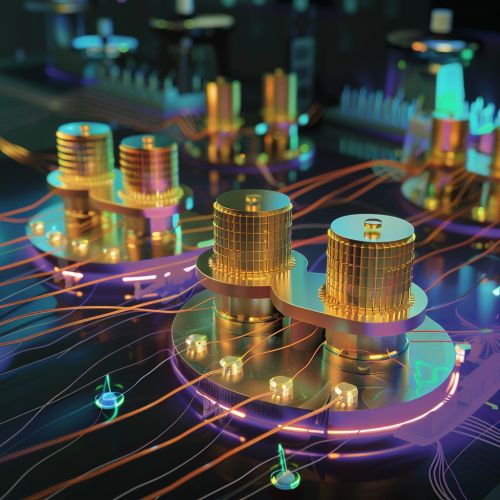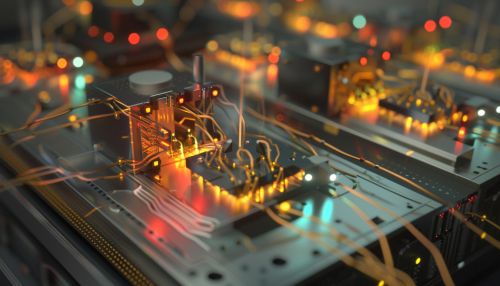Topological Quantum Computation
Introduction
Topological quantum computation is a theoretical approach to quantum computing that employs topological quantum field theories and anyonic systems to perform quantum computations. This approach is based on the manipulation of quantum states of anyons around one another in a process known as braiding. The computation is protected by the topological properties of the anyons, making it inherently resistant to many types of errors.


Topological Quantum Field Theories
Topological Quantum Field Theories (TQFTs) are a class of quantum field theories that exhibit topological properties. These properties are invariant under continuous deformations, meaning they do not change when the system is smoothly deformed. This makes TQFTs particularly useful for topological quantum computation, as the computation remains stable even in the presence of small perturbations or errors.
Anyons and Braiding
Anyons are a type of quasiparticle that exist in two-dimensional systems. Unlike fermions and bosons, which are the two types of particles known in three dimensions, anyons exhibit a unique property: when two anyons are exchanged, or braided, the quantum state of the system can change in a way that depends on the path taken by the anyons. This property is the basis for topological quantum computation.
Braiding in the context of anyons refers to the process of moving anyons around each other in a two-dimensional plane. The braiding process can be used to manipulate the quantum state of the anyons, and thus perform quantum computations. The result of a computation is determined by the sequence of braiding operations, and is protected by the topological nature of the anyons, making it robust against errors.
Quantum Computation with Anyons
In a topological quantum computer, quantum information is stored in the state of anyons, and quantum operations are performed by braiding anyons around each other. The result of a computation is read out by bringing anyons together and observing the result of their interaction, a process known as fusion.
The computational power of a topological quantum computer comes from the fact that the number of possible braidings grows exponentially with the number of anyons, allowing for a large computational space. Moreover, the topological nature of the computation provides a natural form of error correction, as small errors in the braiding paths do not affect the outcome of the computation.
Error Correction in Topological Quantum Computation
One of the major challenges in quantum computing is dealing with errors. Due to the delicate nature of quantum states, even small perturbations can lead to errors that can render a computation useless. However, topological quantum computation has a natural form of error correction built in.
Because the computation is determined by the topological properties of the anyons, it is protected against local errors. This means that small perturbations that do not change the overall braiding pattern do not affect the outcome of the computation. This makes topological quantum computation a promising approach for building robust quantum computers.
Current Research and Future Prospects
Research in topological quantum computation is currently a very active field. While the theoretical foundations are well-established, the practical implementation of topological quantum computers is still a major challenge. This involves the creation and manipulation of anyons, which is a difficult task due to the exotic conditions required for their existence.
Despite these challenges, the prospects for topological quantum computation are promising. The inherent error resistance of this approach makes it a strong candidate for the realization of large-scale quantum computers. Moreover, the study of topological quantum computation has led to many insights in condensed matter physics, quantum field theory, and topology, making it a rich field of research with potential applications beyond quantum computing.
